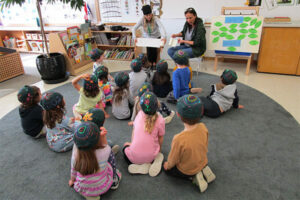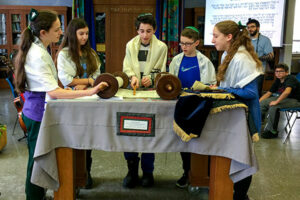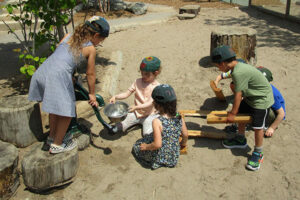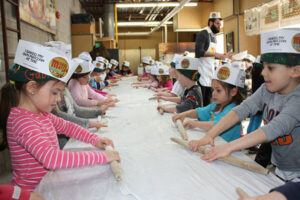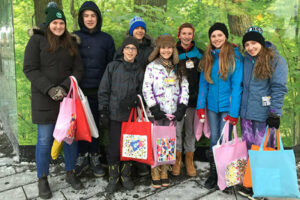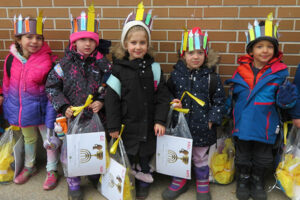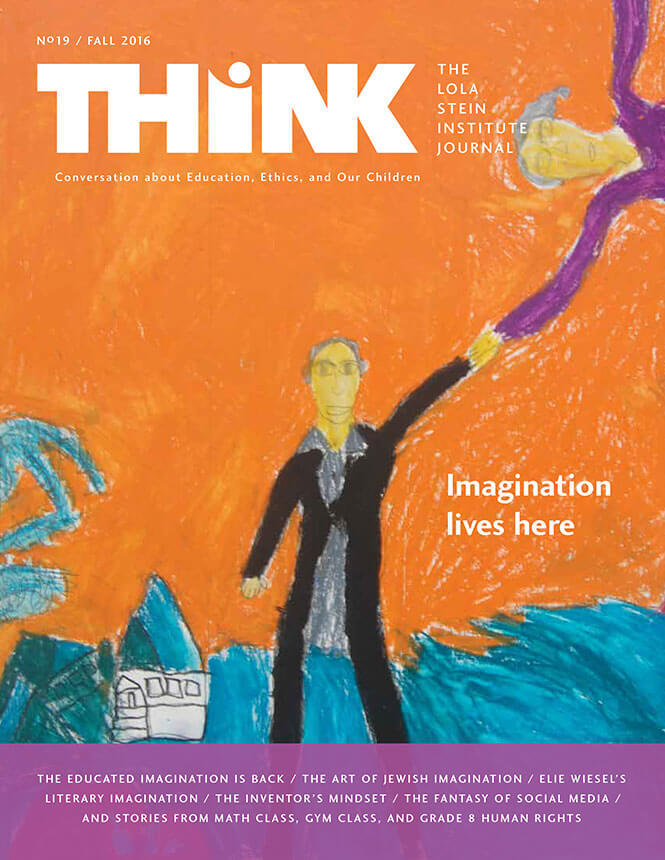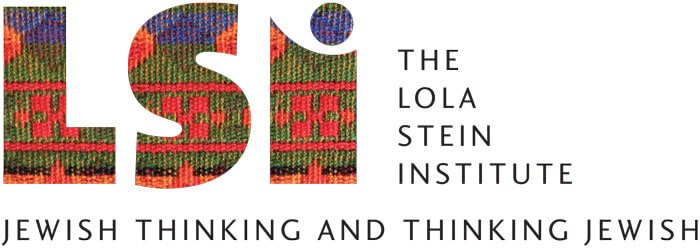- How We Teach

- First Column
- Second Column
- Third Column
- Case Studies

- First Column
- Second Column
- Culture & Community

- First Column
- Second Column
- News & Views

- Admissions

- First Column
- Second Column
- Support Us

- About

- First Column
- Second Column
- Parent Hub
- Attend an Open House
- Take a Tour
- Donate Now
- Calendar
- Blog
- 416-635-1876
- Search
The Well-Framed Open Space
Jewish tradition tells us that the Torah was given to Moses along with an oral tradition, both of which have been handed down from generation to generation. For centuries Jewish scholars cherished keeping the tradition oral in order to preserve creative discourse as the laws were taught from teacher to student. However, after the Bar Kokhba revolt, 132-135 CE, when many of the rabbis and scholars were killed, Rabbi Judah HaNasi, in 200 CE, feared the oral law would be forgotten if it were not recorded. He and other scholars assembled what is known as the Mishnah, a collection of oral teachings codified and organized into topics, thus forever changing the nature of Jewish law.
The same thing has happened at The Toronto Heschel School, where, over the past 20 years, dynamic debate surged back and forth as original curriculum was developed, implemented, and then developed some more. The question of codifying the school’s curriculum was frequently examined; the fear of stifling teachers’ creativity and limiting future adaptation was at the forefront of the conversation. The decision that was finally made respected our educators’ appreciation for a well-described course of study, with predictable skill progressions from grade to grade, and consistency year to year. Therefore, two years ago, the Learning Centre rekindled a project that has been known internally at Heschel as “Project Mishnah,” whose goal is to document The Toronto Heschel School curriculum and best practices across all grades.
Researching the project, I remembered a metaphor for curriculum that a former Brandeis colleague, Joshua Yarden, described as “well-framed open spaces.” Evoking a picture frame surrounding a work of art on canvas, the analogy contemplates definitive goals set around opportunities for initiative and inventiveness. At Heschel the metaphorical frame is thick and elaborate; it holds the possibilities for learning.
Three pre-set core elements comprise the design of the Toronto Heschel curricular framework. First, the school adheres to the curriculum expectations set by the Ontario Ministry of Education. Second, the calendar flow of Torah and Jewish holidays carries the design of Jewish learning over the year. Third, the writings of Abraham Joshua Heschel inform school commitment to pluralism, social justice, environmental stewardship, and wonder. Through the coordination of thematic ideas – called “Generative Topics” – that function as the “matting” inside the frame, the three core elements hold the curriculum of interdisciplinary study that is the school’s specialty. The matting enables the school to coordinate and integrate discrete lessons within a wider spectrum of ideas. The canvas stands open for the artistry of each teacher as a “well-framed open space.”
Talking to different staff members of the Learning Centre, I discovered two different approaches to how teachers might work within the curricular frame. Rachely Tal, a senior educator and early years mentor, describes the Generative Topic as a jumping off point for her own ingenuity. She unites the lessons by incorporating the notions and language of the Generative Topic in an original theme song for each unit.
By way of example, Rav Hanistar Al Hagalui (There is as much in the hidden as there is in the revealed) is a Generative Topic in Grade 1. In the weeks before Purim, a holiday that involves hiding identity and the playful tradition of dressing in costume, the children reflect on ways to distinguish between how people may look and how they may feel inside. In language arts, they read the Purim story from the Megillah and identify the characters’ emotions through their actions. In Hebrew class, they learn vocabulary for different feelings and behaviours. They consider how God is both hidden and revealed in our lives. In social and environmental studies class, they learn the different phases of the moon, which conceal some parts some times and other parts other times.
A master of her method, Rachely’s happy and excited pace told me that her ideas and energy could go on and on. When I said so, she smiled and explained that the Generative Topic also contains her. It makes her craft her lesson carefully and choose what and how to teach these particular children given the finite time for each unit.
Lesley Cohen is a Learning Centre expert for junior high. “Striving for Control and Self-Critique” is the Generative Topic surrounding her Grade 6 ancient civilizations course. While it may exclude things sometimes included in Grade 6 history, such as trade routes or local chronologies, Lesley finds that focus on the ancient world through the lens of the Generative Topic leads the class along a solid thread of historical inquiry. The thesis for the unit argues that to thrive, society must balance ambition with respect for limitations: innovation, technology, aesthetics do well with humility, respect, and common sense. The history lesson is that some civilizations protected this equilibrium from hubris and vulnerability and some didn’t. Lesley’s students examine Minoan artifacts and observe the tension between zealous striving and self-critique in two different stories: Theseus and the Minotaur seek perfection, while the tale of Icarus and Daedalus warns of extreme ambition.
Lesley’s work highlights the value that Project Mishnah holds for replication. Another teacher will be able to teach ancient civilizations using her documented framework, even though each may use it in an individual way. To bring home the lesson that stories reveal ethics and values, for example, Lesley brought in two younger children’s books for her junior high students to consider: the fairy tale, Snow White, and The Paper Bag Princess by Robert Munsch. She asked the class to reflect on how the contrasting ethics and behaviours illustrate dilemmas and options in our own civilization. The mess boisterous Paper Bag Princess achieved personal satisfaction on way, while Snow White’s was quite different.
Working on Project Mishnah, Learning Centre teachers also have a rare professional opportunity to examine their own techniques in depth. I see that Rachely Tal appreciates how the structure of a Generative Topic refines her expertise in engaging six-year-olds, and, conversely, that Lesley Cohen’s contagious passion for history is spirited by the curiosity and whimsy of 12-year-olds.
On an even bigger scale, I see that teachers delivering curriculum to students as “well-framed open spaces” mirrors at school what I as a parent desire for my family at home. Children thrive with the kind of structure that thoughtfully guides their way; yet they need enough free space to investigate and make sense of things for themselves. We parents know this challenge well.
Dvora Goodman , CoordinatorDvora Goodman is a Jewish educator with over twenty five years of experience in educational administration and Jewish experiential learning in various settings. She is the coordinator of The Lola Stein Institute. She is also an educational consultant to various Jewish educational organizations. Her current projects include UJA Federation of Greater Toronto where she has been coaching supplementary school leaders in the Greater Toronto area, and the iCenter for Israel Education where she has been helping Jewish camps and Jewish day schools infuse Israel into their settings.
PREVIOUS ARTICLE
Life CoachPerspectives
 The Lola Stein Institute (LSI) is a centre of inventive educational thinking and addresses the challenge to re-frame schooling for the exigencies of our times.
The Lola Stein Institute (LSI) is a centre of inventive educational thinking and addresses the challenge to re-frame schooling for the exigencies of our times.

